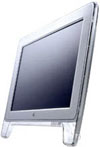The emerging new economy created by the Internet is producing more than just a business revolution — it is also generating enormous environmental benefits. The Internet can turn buildings into websites, and replace warehouses with supply-chain software. It can turn paper and CDs into electrons, and replace trucks with fiberoptic cable. This means significant energy savings, and perhaps a very different type of economic growth than we have seen in the past.

An enviro’s new best friend?
By reducing the amount of energy and materials consumed by business, often dramatically, and by increasing overall productivity, the Internet stands to revolutionize the relationship between economic growth and the environment, according to a new report we’ve produced at the Center for Energy and Climate Solutions. There’s already evidence of a sudden shift in the American energy diet. While the nation’s economy grew by more than 9 percent in 1997 and 1998, energy demand stayed almost flat in spite of very low energy prices, marking a major departure from recent historical patterns.
Part of this trend can be attributed to the growth of information technology and e-commerce. For example, for each book sold, the online retailer Amazon.com uses just one-sixteenth the energy to operate its buildings that a traditional bookseller uses. Internet shopping also uses less energy to get a package to your house. Shipping a 10-pound package by overnight air — the most energy-intensive delivery mode — uses 40 percent less fuel than the average roundtrip drive to the mall. Ground shipping by truck uses just one-tenth the energy of a trip by car to the store.
In fact, each minute spent driving to the mall uses more than 20 times the energy of a minute spent shopping on the Internet. Online shopping eliminates the need for car trips and reduces congestion. Already, nearly 40 percent of people with Internet access say they go to the store or the mall less often.
Many Americans are familiar with consumer e-commerce giants like Amazon.com, eBay, and Travelocity.com. But the lesser-known names doing business-to-business e-commerce, such as supply-chain management, dwarf the consumer sector. While consumer e-commerce is expected to grow from $7.8 billion in 1998 to $108 billion in 2003, business e-commerce is expected to rise from $43 billion to more than $1 trillion, according to Forrester Research. As of mid-1999, General Electric alone was doing more than $1 billion worth of web-based business annually, including online procurement of goods and materials.

A retro warehouse.
Photo: Scott Bly, NREL/PIX.
.Com and Get It
By 2007, e-commerce could eliminate the need for about 5 percent of commercial building space, including up to 1 billion square feet of warehouse space, 1.5 billion square feet of retail space, and 2 billion square feet of commercial office space, the equivalent of almost 450 Sears Towers. Avoiding construction of these buildings could prevent the release of 40 million metric tons of greenhouse gases into the atmosphere. And by eliminating the need for operations and maintenance of these buildings, we could save the output of 20 average power plants and 67 trillion BTUs of natural gas.
The Internet could also save 2.7 million tons of paper every year by 2003, as it reduces the need to print newspapers, catalogs, direct mail, and the like. Because paper manufacturing is one of the most energy- and resource-intensive processes in the economy, such a reduction in paper consumption could cut annual carbon dioxide emissions by some 10 million tons — the equivalent of taking about 2 million cars off the road. These figures could more than double by 2008.

A svelte new-style monitor.
The Internet itself is not a major energy user, largely because it draws heavily on existing communications and computing infrastructure. The average PC and monitor use just 150 watts of power. Today’s new computers are more than twice as efficient as those they are replacing. For example, new flat-panel displays use one quarter the energy of traditional monitors. And, overall, the fast-growing information technology sector is far less energy-intensive than most conventional industries.
Net Gains
Remarkable statistics published this fall by the federal Energy Information Agency (EIA) suggest that a giant shift in the U.S. energy economy is already underway. Despite historically low energy prices, energy intensity — the amount of energy consumed for every dollar of economic output — fell 4 percent in 1997, and another 4 percent in 1998, the biggest two-year drop in half a century. The EIA projects that 1999 figures will continue to show large efficiency gains. By contrast, the average yearly improvement from 1987 to 1996 was less than 1 percent.
About a third of the gain over the last two years is attributable to expansion in sectors with relatively modest energy needs — especially the double-digit growth in information technology. The rest is due to increased efficiency throughout the economy. If the new pattern holds, energy intensity gains from 1997 to 2007 could double the annual gains of the previous decade.
Under the unratified Kyoto global warming treaty, the U.S. pledged to cut greenhouse gas emissions to 7 percent below 1990 levels by 2012. Current business-as-usual projections indicate that we’re dramatically off course, likely by 2010 to have emissions 33 percent above 1990 levels. But a recent EPA analysis concluded that the new structural shifts in our economy mean that standard emissions estimates for the U.S. for 2010 may be overstated by the equivalent of 175 power plants and 300 million metric tons of carbon dioxide per year. It may be that the rise of the Internet economy could help significantly reduce both the difficulty and the cost of hitting our Kyoto targets.


